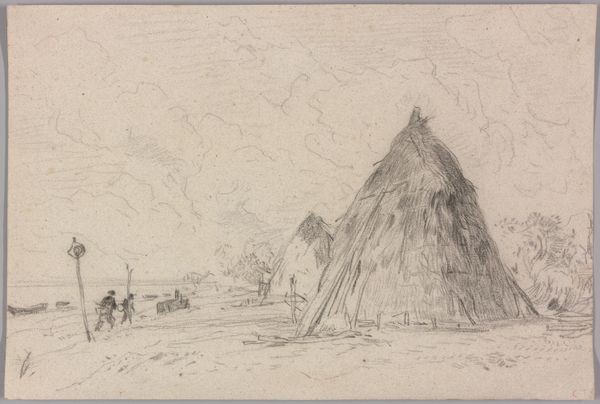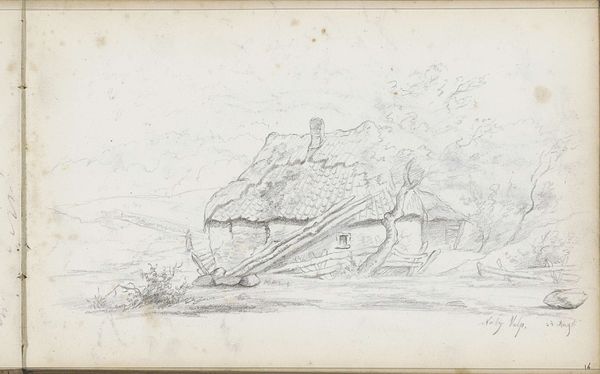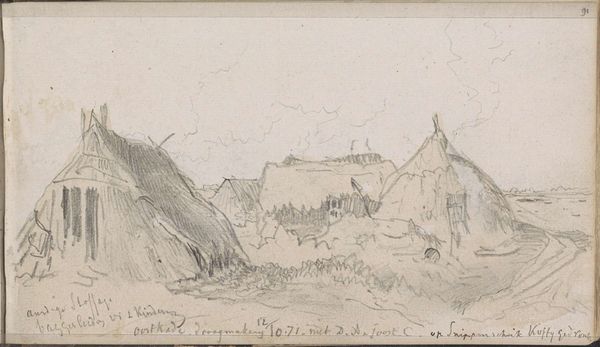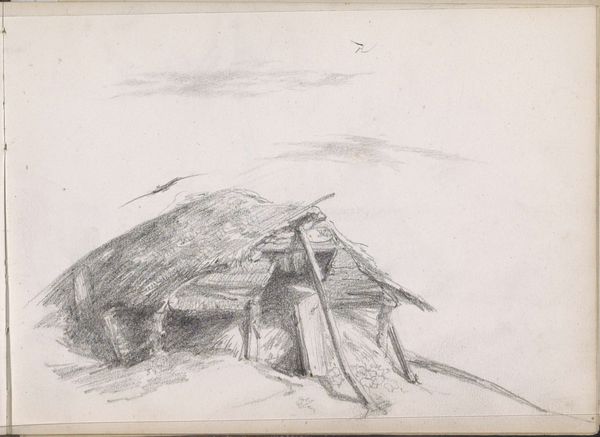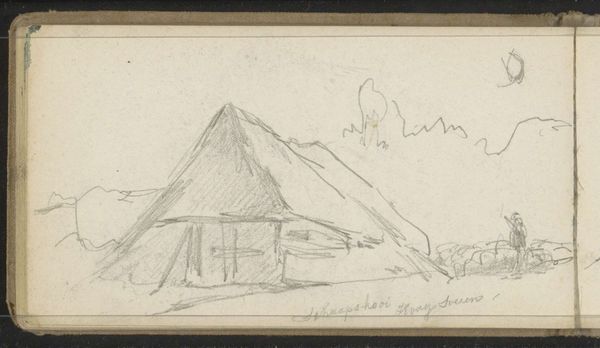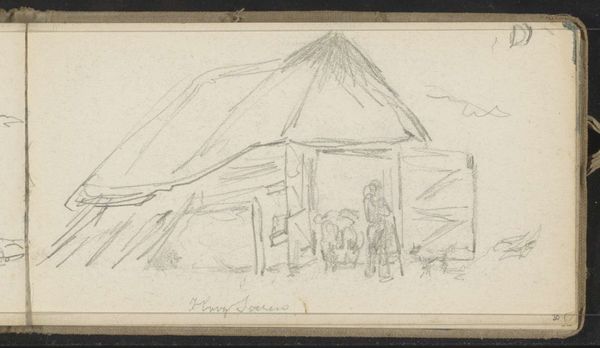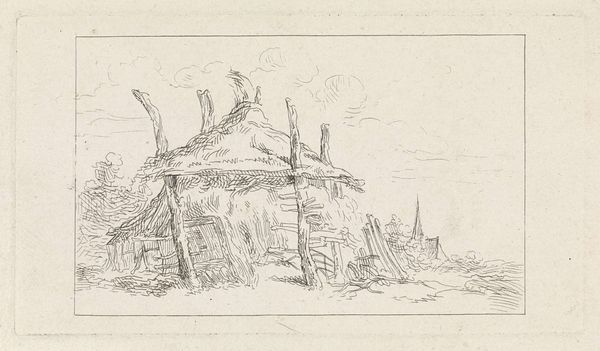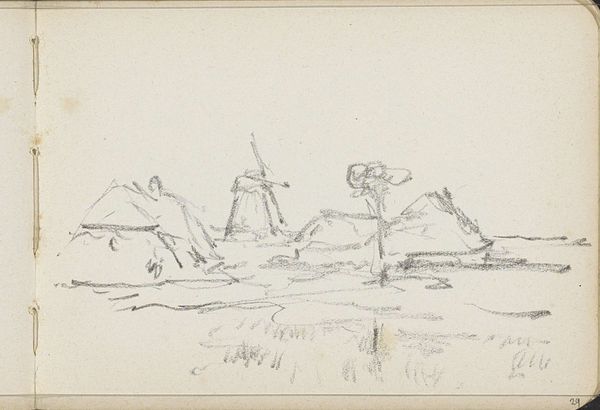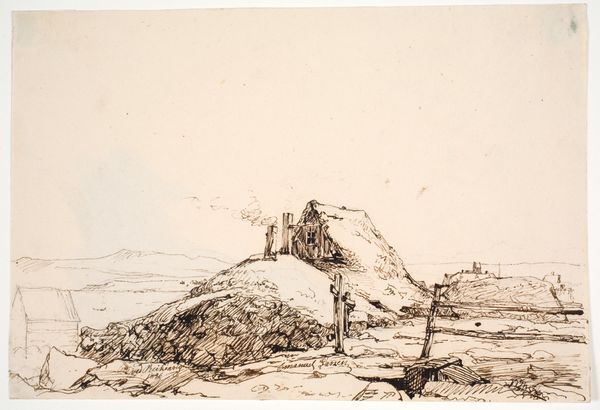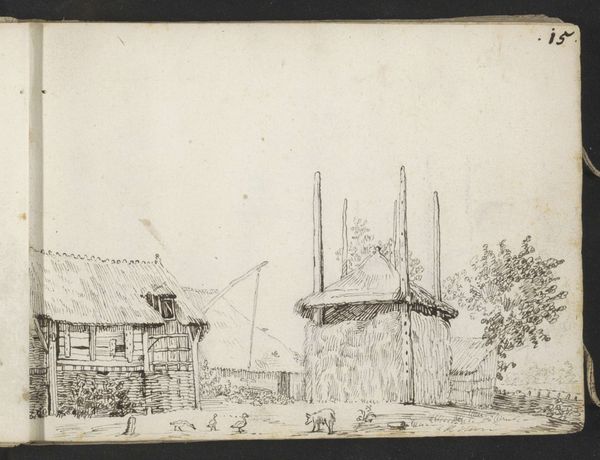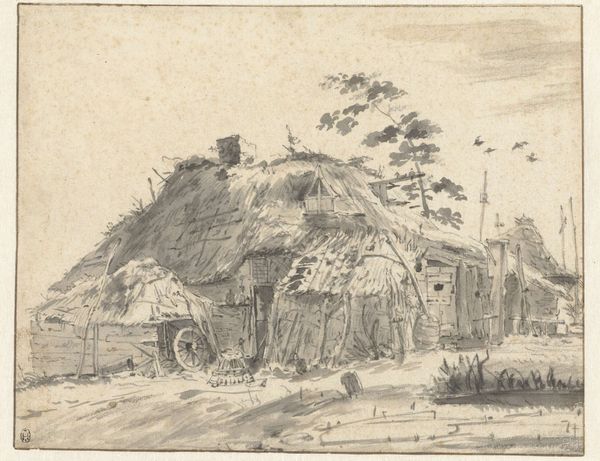
Deels met riet overdekte plaggenhut op de heide van Nütterden 1846
0:00
0:00
drawing, ink, pencil
#
drawing
#
landscape
#
ink
#
romanticism
#
pencil
#
realism
Copyright: Rijks Museum: Open Domain
Editor: This is "Deels met riet overdekte plaggenhut op de heide van Nütterden," a drawing from 1846 by Johannes Tavenraat, rendered in ink and pencil. There's something quite desolate and lonely about this simple dwelling on the heath. How do you interpret this work? Curator: What strikes me is the way this drawing captures a moment of significant social change. The mid-19th century saw increasing industrialization and urbanization across Europe. An image like this, a humble thatched cottage, presents a visual contrast to those sweeping societal shifts. It represents a disappearing way of life, increasingly viewed through a romantic, perhaps even nostalgic lens. Editor: So, it's not just a picture of a house? Curator: Precisely. Consider the location – the heath of Nütterden. Heaths were often marginal lands, places of poverty, contrasting with the emerging urban centers. Tavenraat's choice to depict this kind of dwelling elevates the everyday experience of the rural poor to a subject worthy of artistic attention, reflecting a broader artistic interest in the lives of ordinary people, don’t you think? Editor: It’s like a visual record, but with a certain… tenderness. It also raises questions about who this was made *for*, since rural farmers were unlikely patrons of the arts. Curator: An astute observation. The drawing would most likely have been intended for a middle-class or urban audience, providing them with a glimpse into a life vastly different from their own, perhaps fueling sentimental ideas about simpler times, contrasting with anxieties around rapid societal shifts. This piece is then enmeshed in the social complexities of class and the gaze upon it. What do you make of this romantic gaze? Editor: That makes so much sense. It's interesting to consider how this image functions as both documentation and social commentary, perceived so differently then. Thanks for pointing that out. Curator: Indeed. Looking closely reveals how much these seemingly simple landscapes were entangled with larger social and political currents. Always consider how social position and audience can shape artistic creation.
Comments
No comments
Be the first to comment and join the conversation on the ultimate creative platform.
